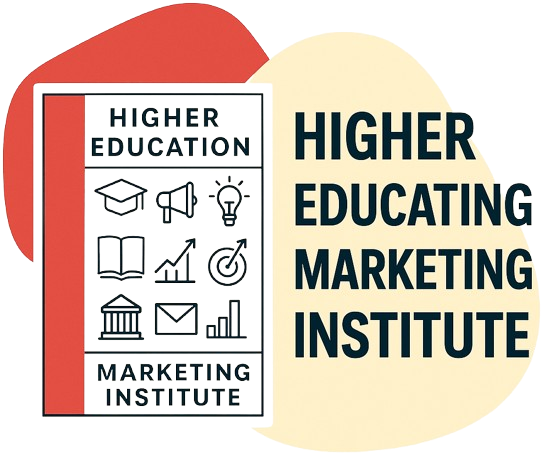Did you know that around 80% of prospective students begin their college search online? You're in the business of education, so you know how vital it is to attract the right students to your institution. But with the digital age making information accessible at the click of a button, the competition for those students has become fiercer.
Inbound marketing, which includes SEO optimization, content marketing, and effective use of social media, is a powerful tool that can help your institution stand out. As we explore this topic in depth, we'll uncover how you can leverage these strategies to not only attract students, but the 'right' students for your institution.
Stay with us, because you won't want to miss this valuable insight.
Key Takeaways
- Inbound marketing focuses on creating valuable content tailored to potential students.
- SEO can significantly boost student recruitment efforts by attracting the right kind of visitors.
- Compelling and personalized content is crucial for engaging and convincing prospective students.
- Social media platforms are powerful tools for reaching and engaging potential students.
Understanding Inbound Marketing

You might be wondering, 'What exactly is inbound marketing?' Simply put, it's a business methodology that attracts customers by creating valuable content tailored to them. Unlike outbound marketing, where you push your message out, inbound marketing 'pulls' customers in.
Inbound strategies focus on creating engaging, relevant content that your audience wants to consume. This could be blogs, eBooks, social media updates, or videos. The goal is to earn the attention of potential customers, making your school easy to find online, and drawing customers to your website by producing content they value.
A critical part of inbound marketing is marketing automation. It's the software that helps you streamline, automate, and measure your marketing tasks. It nurtures leads through the sales funnel by sending personalized, targeted messages at the right time.
The Role of SEO in Student Recruitment
Harnessing the power of SEO can significantly boost your student recruitment efforts. It's not just about driving traffic to your website, but about attracting the right kind of visitors – prospective students who are likely to enroll.
So, how can you leverage SEO? Here's a simple four-step process:
- SEO Strategy Development: Start by outlining your goals, identifying your target audience, and understanding what they're searching for. This will inform your SEO strategy and guide all your future efforts.
- Keyword Research Importance: This can't be overstressed. Conduct thorough research to identify the keywords your prospective students are using. Then, incorporate these into your website content, blog posts, and meta descriptions.
- Optimize Your Content: Use your keywords naturally and effectively to enhance your content's relevance and readability. Remember, you're writing for humans first, search engines second.
- Monitor and Adjust: SEO isn't a one-time thing. Keep an eye on your results, track your progress, and adjust your strategy as necessary.
Content Marketing for Higher Education

While SEO plays a crucial role in attracting potential students, it's your compelling content that'll truly engage and convince them to choose your institution.
Now, let's focus on content marketing for higher education. You need to use content personalization strategies to reach out to your prospective students. By understanding their needs, preferences, and aspirations, you can tailor your content to resonate with them. This could be through personalized emails, tailored blog posts, or customized landing pages. Remember, a one-size-fits-all approach won't work.
Next, don't overlook the power of video marketing trends. Videos are a powerful tool for storytelling, and millennials love them. You can use videos to showcase your campus, share student experiences, or explain complex concepts in an easy-to-understand manner. This not only makes your content engaging but also helps students visualize what studying at your institution would be like.
Utilizing Social Media Platforms
Transitioning to the realm of social media, it's critical to understand its power in reaching and engaging potential students. As a higher education institution, your goal is to attract the right students. To do so, you need to be where they're – on social media platforms.
- Platform selection: Not all social media platforms are created equal. You need to understand where your target audience spends most of their time. Is it on Facebook, Instagram, LinkedIn or TikTok? Your resources should be allocated based on your target demographic's preferred platforms.
- Campaign strategies: Once you've selected your platforms, it's time to devise your campaign strategies. What type of content will resonate with your audience? Will it be informative posts, engaging videos or user-generated content?
- Engagement: You're not just posting content, you're aiming for interaction. Respond to comments, answer questions, and initiate discussions. This helps build a stronger connection with potential students.
- Analysis and refinement: Measure the success of your campaigns. Are they driving engagement and conversions? Use this data to refine your strategies and improve future campaigns.
With careful platform selection and strategic campaign strategies, you can tap into the power of social media to attract the students who are the right fit for your institution.
Analyzing Inbound Marketing Results

Now, let's delve into how you can analyze the results of your inbound marketing efforts, determining their effectiveness and identifying areas for improvement. You'll need to track and evaluate Performance Metrics. These include website traffic, social media engagement, email open rates, and conversion rates. They'll give you a clear picture of how well your strategies are working.
Conversion Optimization is another crucial aspect. It's all about increasing the percentage of visitors who complete a desired action on your site. This could be filling out a form, downloading a brochure, or booking a campus tour. You've got to test different elements on your website, such as headlines, images, or call-to-action buttons, to see what resonates with your target audience and drives them to take action.
Don't be disheartened if you're not seeing the results you want immediately. Inbound marketing is a long-term strategy, and it might take some tweaking and refining to get things right. But by regularly analyzing your Performance Metrics and working on Conversion Optimization, you'll be on your way to attracting the right students for your institution.
Conclusion
So, you've explored the vast ocean of inbound marketing and dipped your toes in its potential. With SEO as your compass, content marketing as your sail, and social media as your wind, you're set to navigate the higher education market.
By analyzing your results, you'll find the right students, making your institution a beacon in the sea of academia.
Remember, inbound marketing isn't just a strategy, it's a journey towards academic success.




